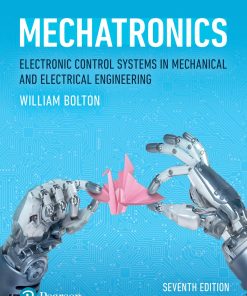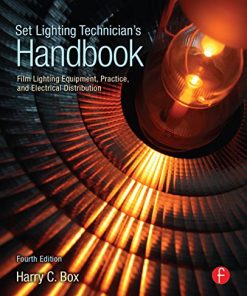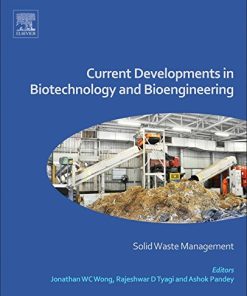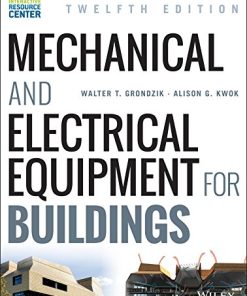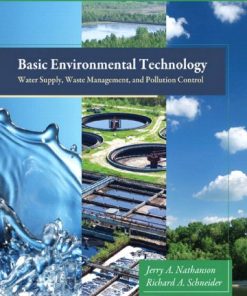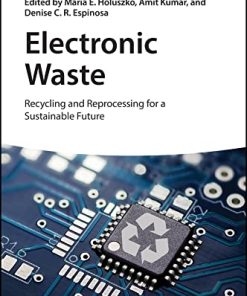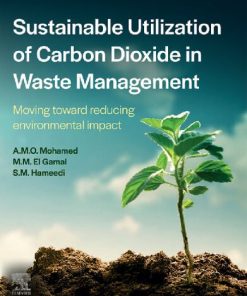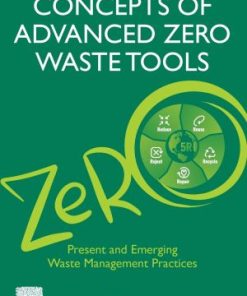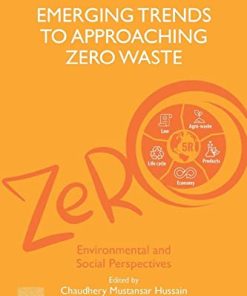(Ebook PDF) Environmental Management of Waste Electrical and Electronic Equipment 1st Edition by Chaudhery Mustansar Hussain 0128224894 9780128224892 full chapters
$50.00 Original price was: $50.00.$25.00Current price is: $25.00.
Environmental Management of Waste Electrical and Electronic Equipment 1st Edition by Chaudhery Mustansar Hussain – Ebook PDF Instant Download/DeliveryISBN: 0128224894, 9780128224892
Full download Environmental Management of Waste Electrical and Electronic Equipment 1st Edition after payment.
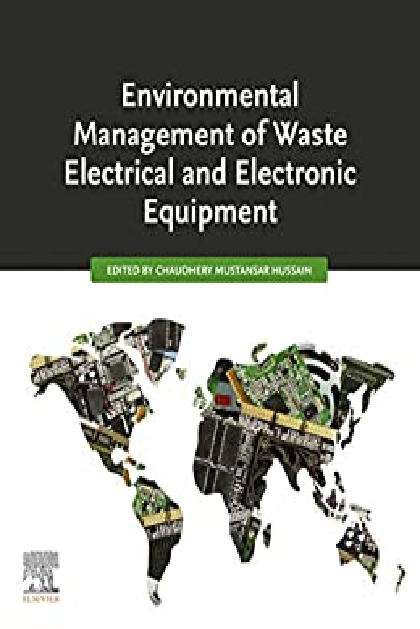
Product details:
ISBN-10 : 0128224894
ISBN-13 : 9780128224892
Author: Chaudhery Mustansar Hussain
Environmental Management of Waste Electrical and Electronic Equipment illustrates the socioeconomic, technical and environmental perspectives of WEEE, allowing for a better understanding on how to manage this rapidly growing waste stream. The book addresses discharge of WEEE into ecosystems, occupational exposure to hazardous components of WEEE, and loss of recoverable resources, bridging the gap between community and waste management. By providing in-depth analysis and step-by-step descriptions of environmental strategies and procedures for managing electrical and electronic waste, this book is a valuable resource for environmental scientists, environmental engineers, and waste management professionals to achieve sustainability in WEEE.
Environmental Management of Waste Electrical and Electronic Equipment 1st Table of contents:
Part 1. Introduction
1. Environmental problems and management aspects of waste electrical and electronic equipment and use of clean energy for sustainable development
1. Introduction
2. Sources of e-waste
3. Classification of e-waste
4. Challenges of e-wastes
5. Continent-wise and country-wise generation of e-wastes
6. Management aspects of e-wastes
7. Basel convention
8. Suggestions
9. Use of clean energy for sustainable development
10. Conclusion
2. Waste electrical and electronic equipment and environment: context, implications, and trends
1. Introduction
2. Methodology
3. Results and discussion
4. Conclusions
3. E-waste: an emerging threat to “one health”
1. Introduction
2. E-waste generation
3. Impact on “One Health”
4. E-waste management and policy level initiatives in India
5. Conclusion
Part 2. Treatment technologies for WEEE
4. Microbe-assisted management and recovery of heavy metals from electronic wastes
1. Introduction
2. Composition of WEEE
3. Environment concerns and health hazards
4. Burgeoning burden of e-waste
5. WEEE management strategies
6. Metallurgical processing of WEEE
7. Conclusion
5. Biohydrometallurgical methods and the processes involved in the bioleaching of WEEE
1. Biological management of e-waste
2. Biohydrometallurgy for e-waste treatment
3. Modes of biohydrometallurgy
4. Processes involved in biohydrometallurgy
5. Bioleaching methods
6. Sequential batch bioleaching
7. Conclusion
6. Hybrid bioleaching—an emerging technique for extraction of critical metals from WEEE
1. Introduction
2. Occurrence of critical metals in PCBs
3. Overview of hybrid bioleaching process
4. Applicability of hybrid bioleaching for extraction of critical metals from WEEE
5. SWOT analysis
6. Future perspectives
7. Conclusions
7. Current trends and future perspectives of biobased methods for recovery of metals from WEEE for a sustainable environment
1. Introduction
2. Modeling and simulation studies regarding chemical and physical methods
3. Alternative technology to recycle metals from e-waste
4. Current trends and future prospectus
8. Recycling of e-waste in concrete
1. An introduction to concrete
2. Environmental impacts of concrete
3. Importance of e-waste management
4. E-waste in concrete
5. Conclusions
9. Biological treatment, recovery, and recycling of metals from waste printed circuit boards
1. Introduction
2. Classification, toxicity, and impact of WPCBs
3. Bio-based technologies for recovering metallic resources from waste PCBs
4. Effect of process factors for the bioleaching of precious metals
5. Future perspective and challenges
6. Conclusions
10. Process engineering for bioleaching of metals from waste electrical and electronic equipment
1. Introduction
2. Principles of metal bioleaching
3. Microbiology involved in metal bioleaching
4. Application of bioprocess engineering for metal bioleaching from WEEE
5. Modes of bioreactor operation for metal bioleaching from WEEE
6. Bioreactor design for bioleaching of metals from WEEE
7. Limitations of bioprocessing of WEEE
8. Conclusions and future perspectives
Part 3. Environmental management tools for WEEE
11. Financial stimulation policy as a part of socioeconomic intervention in the area of waste electrical and electronic equipment recycling
1. Introduction
2. Socioeconomic and legislative ambience in the area of WEEE recycling
3. Socioeconomic benefits in waste electrical and electronic equipment recycling
4. Socioeconomic intervention in the area of waste electrical and electronic equipment in the Republic of Serbia
5. Conclusion
Part 4. Environmental management for WEEE & sustainability paradigm
12. Achievement of sustainability by tackling e-waste overpower
1. Introduction
2. Sources of e-waste
3. Impacts of WEEE
4. Impacts on atmosphere
5. Impacts on soil
6. Impacts on ecosystem
7. Impact on human beings
8. Legal framework for waste management
9. Existing EU laws
10. UN e-waste coalition
11. The e-waste management and handling rules, 2011
12. E-waste management rules, 2016
13. Amendment to the E-Waste Management Rules, 2018
14. WEEE management strategies
15. Case study Switzerland
16. Conclusion
People also search for Environmental Management of Waste Electrical and Electronic Equipment 1st:
what is environmental waste management
what is environmental waste
environmental engineering waste management
environmental impact of electrical substation
waste management waste to energy
Tags:
Environmental Management,Waste Electrical,Electronic Equipment,Chaudhery Mustansar Hussain
You may also like…
Engineering - Mechanical Engineering & Dynamics
Engineering - Bioengineering
Current Developments in Biotechnology and Bioengineering: Solid Waste Management 1st Edition
Engineering - Electrical & Electronic Engineering
Uncategorized
Emerging Trends to Approaching Zero Waste: Environmental and Social Perspectives 1st Edition




